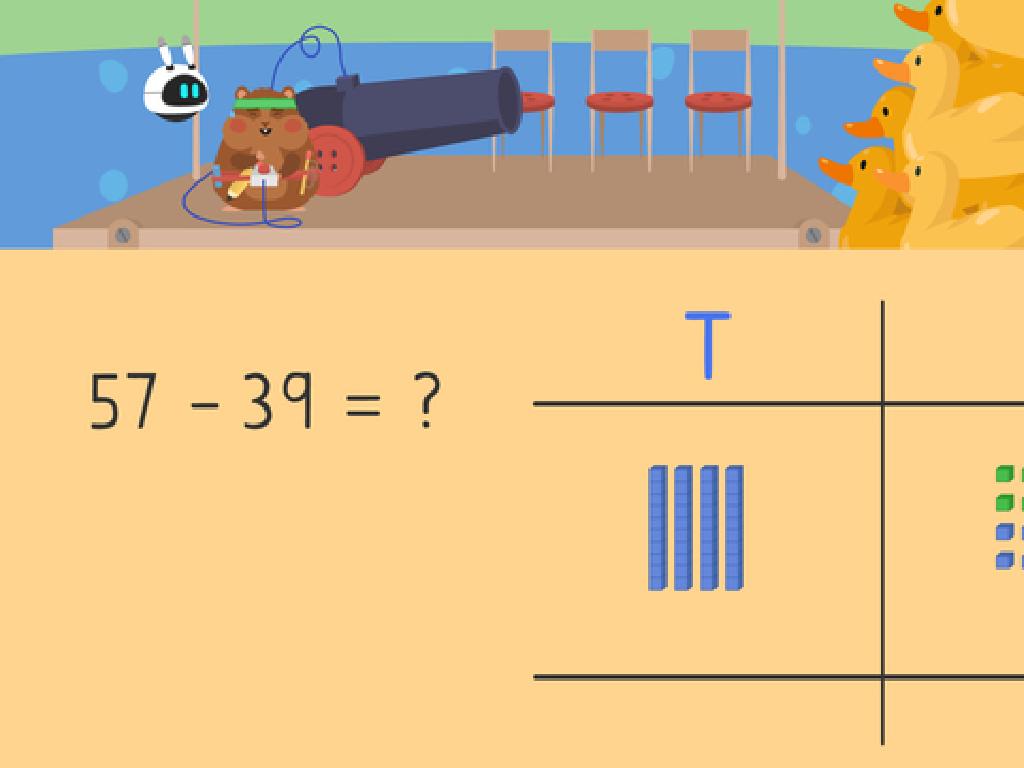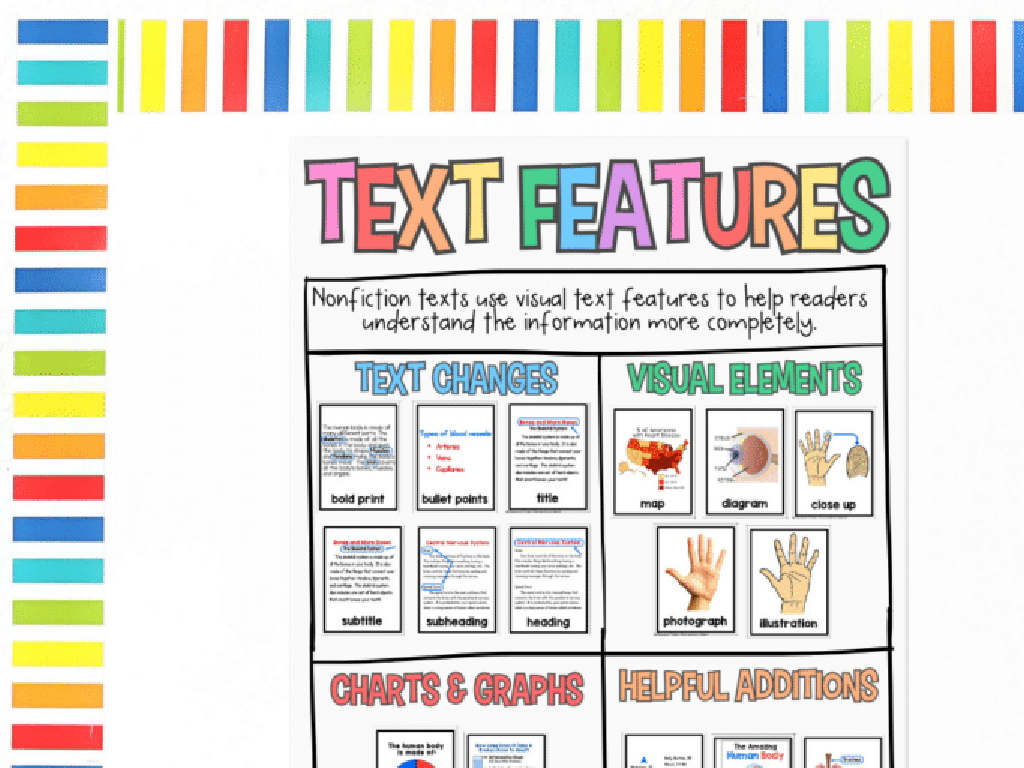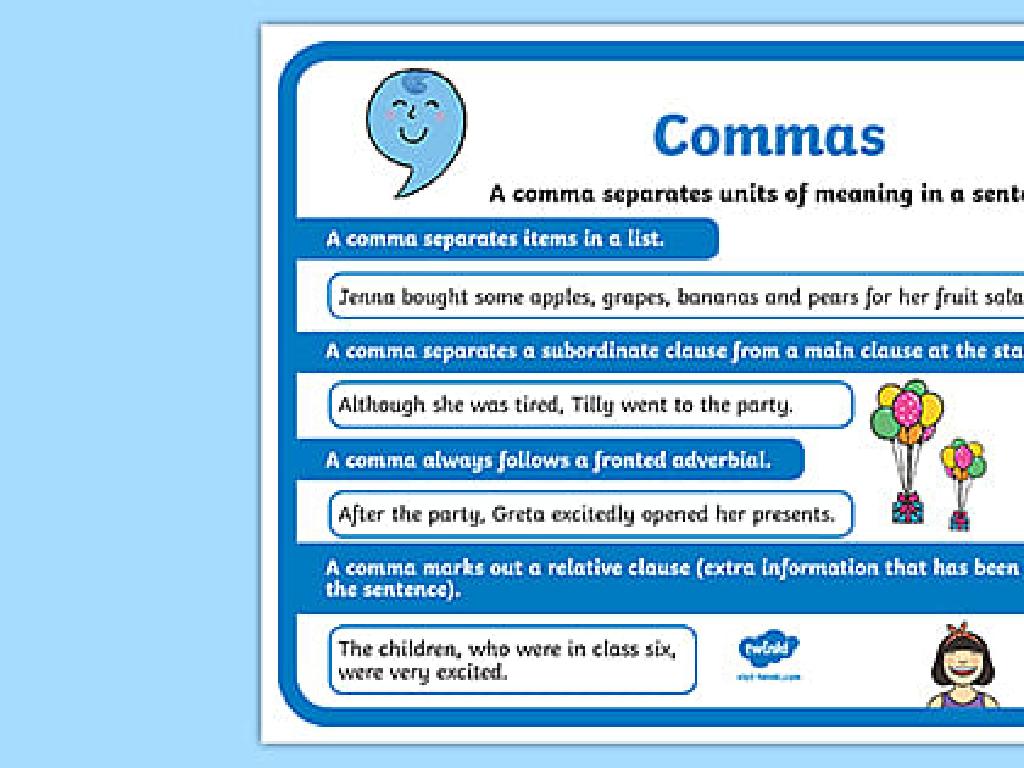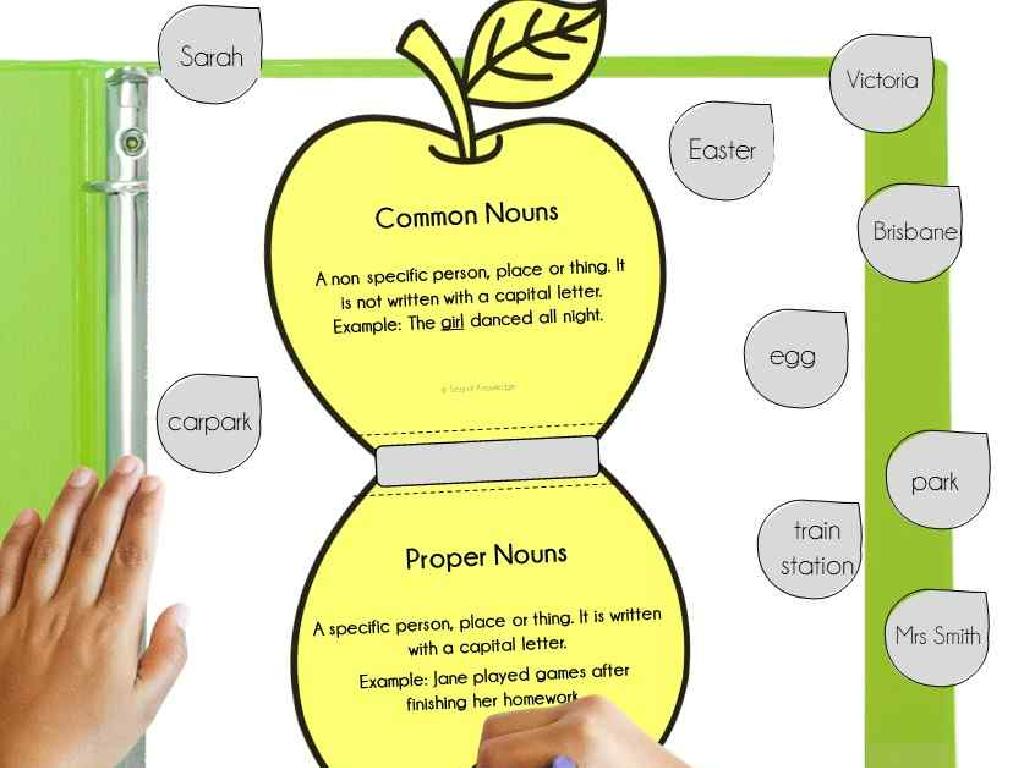Identify Sensory Details
Subject: Language arts
Grade: Third grade
Topic: Sensory Details
Please LOG IN to download the presentation. Access is available to registered users only.
View More Content
Exploring Sensory Details
– Discover the Five Senses
– Sight, sound, smell, taste, touch
– Senses help us experience the world
– We use senses to understand our surroundings
– Sensory Details in Stories
– Descriptive words that appeal to our senses
– Why Sensory Details matter
|
This slide introduces the concept of sensory details to third-grade students, starting with a basic understanding of the five senses. Explain how each sense contributes to our experience of the world. Then, connect this understanding to language arts by discussing how sensory details in writing can create vivid images in the reader’s mind. Emphasize the importance of using sensory language to make stories come alive. Encourage students to think of examples from their favorite books where they ‘felt’ the story through the author’s descriptive language. This will set the foundation for them to use sensory details in their own writing.
Exploring Our Senses
– Sight: Observing the world
– Look around, what colors and shapes do you see?
– Sound: Listening to our environment
– Close your eyes, what sounds can you hear right now?
– Smell: Detecting scents around us
– Take a deep breath, can you smell anything?
– Taste: Enjoying different flavors
– Think of your favorite food, what does it taste like?
– Touch: Feeling textures and temperatures
– Hold an object, is it rough or smooth, hot or cold?
|
This slide is designed to introduce third-grade students to the concept of sensory details in language arts. Sensory details are descriptions that appeal to our senses and help us to imagine a scene or experience in a story. Encourage students to think about how they use their senses of sight, sound, smell, taste, and touch in everyday life. Provide examples for each sense and ask students to share their own experiences. For instance, sight could involve describing the color of the sky, sound could be the noise of traffic, smell might be the scent of rain, taste could be the sweetness of an apple, and touch could be the softness of a cat’s fur. This will help them understand how sensory details create vivid imagery in writing.
Exploring Sensory Details in Writing
– What are sensory details?
– Words that describe how we see, hear, smell, taste, or touch
– Sensory details in stories
– They help us imagine the story’s world
– Examples of sensory details
– ‘The cinnamon-scented candles filled the room’, ‘The silk dress was smooth as water’
– Why sensory details matter
– They make stories vivid and engaging for readers
|
This slide introduces the concept of sensory details and their importance in writing. Sensory details are descriptive elements that pertain to the five senses and are used to paint a vivid picture in the reader’s mind. When authors include sensory details, they allow readers to fully immerse themselves in the world of the story, making the experience more relatable and interesting. Encourage students to think of their favorite stories and the descriptive words that made those stories come alive. Discuss how sensory details enhance their reading experience and how they can use them in their own writing to make it more engaging.
Exploring Sensory Details in Texts
– Spotting sensory details
– Look for words that describe how things look, sound, smell, taste, or feel
– Practice with a paragraph
– Find and highlight words in a paragraph that appeal to the senses
– Discussing the impact
– Share how sensory words create a vivid picture in our minds
|
This slide is aimed at helping third-grade students understand and identify sensory details in texts. Sensory details are words that describe how things look, sound, smell, taste, or feel, which are crucial for creating vivid imagery in writing. Start by explaining what sensory details are and how they can be spotted in a text. Then, move on to a practical exercise where students will identify sensory details in a given paragraph. Encourage them to highlight or list these words. Finally, have a discussion on how these sensory details enhance their understanding of the text and make the experience more immersive. This will help them appreciate the importance of descriptive language in literature.
Using Our Senses in Writing
– Craft sentences with senses
– Use sight, sound, smell, taste, touch to write
– Example: Describing a pie
– ‘The cinnamon apple pie smelled sweet and spicy, making my mouth water.’
– Why use sensory details?
– They make stories vivid and real for the reader
|
This slide encourages students to enhance their writing by including sensory details. Start by explaining that sensory details are descriptions involving the five senses. Give the example provided to illustrate how sensory details, like the smell of cinnamon apple pie, can paint a vivid picture in the reader’s mind and evoke emotions. Discuss why sensory details are crucial in storytelling; they help the reader to fully immerse themselves in the story, making the experience more engaging and memorable. Encourage students to think of their favorite food or place and write sentences using sensory details. Remind them to use adjectives that describe how things look, sound, smell, taste, and feel.
Class Activity: Sensory Detail Hunt
– Read a story as a class
– Hunt for sensory details
– Look for words that describe sights, sounds, smells, tastes, and textures
– List the details you find
– Share with your classmates
|
This activity is designed to help students improve their ability to identify sensory details in text, which will enhance their descriptive writing skills. Begin by reading a short story aloud to the class. As you read, pause to discuss vivid descriptions and ask students to visualize the scenes. After reading, have students individually or in small groups search for and list sensory details from the story, focusing on the five senses. Encourage them to find words or phrases that help them see, hear, smell, taste, and touch the story world. Once they have their lists, ask students to share their findings with the class. This will allow them to learn from each other and see how sensory details can vary in interpretation. For the teacher: Prepare a list of possible stories with rich sensory language, ensure each student has a copy of the story or can see the text clearly, and have a worksheet ready for them to record their sensory details.
Sensory Details: Conclusion & Homework
– Recap: Why sensory details matter
– Sensory details make stories come alive
– Homework: Craft a sensory-rich paragraph
– Describe a place or moment using sight, sound, smell, taste, and touch
– Use all five senses in your writing
– Share your paragraph next class
|
As we conclude, remind students that sensory details are crucial for creating vivid images in the reader’s mind, making stories more engaging and memorable. For homework, they should write a short paragraph describing a scene or object, using all five senses to provide a rich experience. Encourage creativity and the use of adjectives. In the next class, students will have the opportunity to share their work, which will help them appreciate the power of descriptive language and learn from each other’s use of sensory details.






